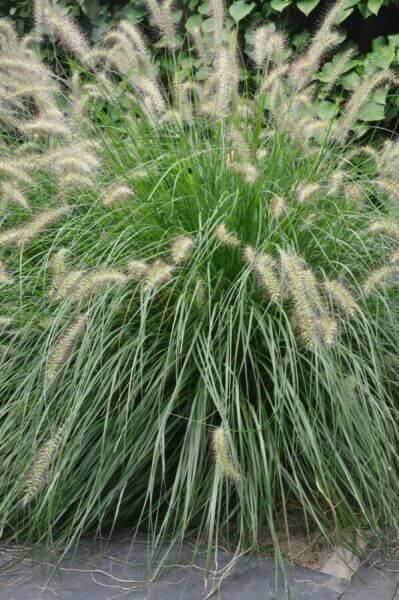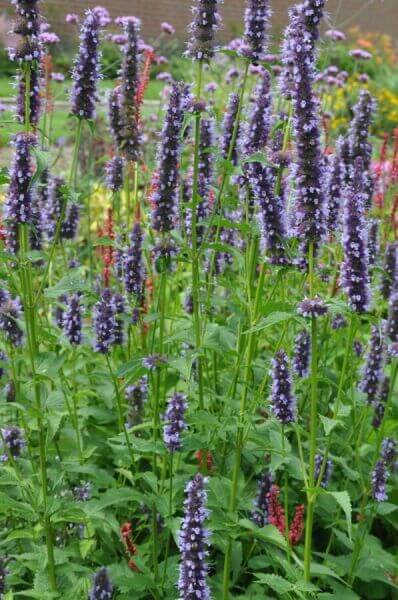Hedge Plants For Statement Hedges
Hedge Plants For Statement Hedges
Blog Article
Hedge Plants For Protecting Gardens
Enhance your garden's allure with rich hedge varieties such as Yew (Taxus), Thuja, Laurel, Photinia, and Bamboo, commemorated for their structural integrity and environmental advantages.
Yew and Thuja provide evergreen protection and winter season resilience, while Laurel provides quick development and broad, fragrant leaves.
Photinia includes seasonal beauty with its dynamic red foliage, and Bamboo provides a low-maintenance, serene ambiance.
These hedges enhance air quality, decrease sound, and develop tranquil, private spaces.
Correct planting, spacing, and maintenance guarantee energetic development and ecological consistency.
Check out how these lush varieties can raise your garden's beauty and wellness.
Key Takeaways
Transform Your Garden With Lush Hedge Ranges
- Select Yew for its thick, evergreen growth and unequaled longevity.
- Select Laurel for its quick growth and broad leaves, guaranteeing fast personal privacy.
- Pick Photinia for its vibrant seasonal foliage, which turns a striking dark red.
- Utilize Bamboo for a low-maintenance, winter-hardy hedge with aesthetic appeal.
- Space plants 2-3 per meter and prune routinely for optimum development and health.
Popular Hedge Plants
When changing a garden with rich hedge varieties, it's vital to think about popular hedge plants such as Yew, Thuja, Laurel, and Photinia due to their special attributes and advantages.
Yew (Taxus) is extremely respected for its durability and thick, green growth, making it a prime choice for withstanding landscapes.
Thuja is kept in mind for its evergreen foliage and robust winter season durability.
Photinia includes seasonal vibrancy with red leaves that darken in time, creating dynamic visual appeal.
Laurel provides fast growth and aromatic, broad leaves, perfect for fast personal privacy.
Furthermore, Bamboo is an outstanding choice for ambiance, using a low-maintenance, winter-hardy alternative that improves the garden's aesthetic with its elegant, swaying canes.
These choices deal with a range of horticultural needs and preferences.
Advantages of Garden Hedges
Garden hedges provide a wide variety of benefits, making them an important addition to any landscape. These natural barriers are economical to execute and provide considerable wind protection, boosting air flow and contributing to sound reduction. The thick foliage of hedges like Thuja and Beech ensures personal privacy by blocking exposure, developing a peaceful and remote environment.
Hedges also play a crucial role in microclimate guideline, offering a stable environment that fosters plant development and decreases temperature level changes. Their complex leaf structures filter contaminants, improving air quality and contributing to a healthier garden environment.
Furthermore, hedges master sound decrease, taking in and deflecting acoustic waves to lower ambient noise levels. This double functionality of offering both visual and acoustic privacy boosts the overall serenity and visual appeal of any garden.
Planting and Maintenance Tips
For an effective hedge, meticulous preparation of the planting area is vital. Ensure the soil has correct pH and drainage to support strong root advancement.
Space the plants properly for the picked species. Water the hedge regularly throughout its initial development phase, changing as needed with seasonal changes.
Implement a organized insect control and illness avoidance method, utilizing natural or chemical treatments when necessary. Routinely examine for aphids, termites, and fungal infections.
Apply mulch to retain moisture and suppress weeds. Seasonal pruning promotes dense development and air blood circulation, essential for plant health.
Following these guidelines will help you cultivate a vibrant, properly maintained hedge that boosts the appeal of your garden.
Spacing and Trimming Guidelines
Spacing and Trimming Guidelines
Proper spacing and cutting are vital for cultivating healthy, visually appealing hedges. Sufficient spacing guarantees each plant gets adequate nutrients, light, and air flow.
Follow these standards for ideal hedge maintenance:
- Spacing: Position hedge plants 2-3 plants per meter to encourage robust growth.
- Pruning Techniques: Routine pruning is necessary for keeping wanted hedge height and shape. Cut new growth in summer and cut back older wood throughout winter season.
- Seasonal Care: Change trimming techniques and schedules according to seasonal requirements to guarantee plant health.
- Hedge Height: Regularly monitor and cut to keep the preferred hedge height and achieve uniform aesthetics.
Sticking to these steps will ensure your hedge grows, improving both the appeal and functionality of your garden.
Picking the Right Hedge
Picking the Right Hedge
Choosing the appropriate hedge includes examining elements such as mature height, foliage density, and ecological resilience. Effective hedge plant selection requires comprehending each species' development attributes and site-specific versatility.
For instance, Yew (Taxus) provides excellent durability and dense development, while Thuja is notable for its winter season durability. In addition, get more info considering upkeep requirements is important; fast-growing types like Laurel or Privet demand routine trimming, whereas low-maintenance alternatives like Bamboo or Ivy may be more effective for those seeking very little upkeep.
Ecological factors such as soil type, light accessibility, and moisture conditions must likewise guide the choice process. This cautious approach makes sure the selected hedges will grow, providing both practical and visual benefits to the garden landscape.
Shipment and Planting Guidance
To ensure your hedge plants prosper, they should be delivered by specialized carriers and planted without delay upon arrival.
Follow these vital steps for effective planting:
- Soil Preparation: Enrich the soil with natural matter to enhance drainage and nutrient content.
- Planting Depth: Produce a trench two times the width and equivalent to the depth of the root ball.
- Watering Strategies: Water thoroughly after planting, keeping the soil consistently damp however not filled.
- Mulching: Apply a layer of mulch to retain moisture and suppress weeds.
Client Assistance and Service
Offered the crucial role of timely support in horticultural pursuits, our client assistance group is available six days a week through telephone, email, and social media to offer professional suggestions and promptly resolve any concerns. Their dedication to quick reaction times makes sure consumer fulfillment by resolving questions related to plant health, optimum planting approaches, and upkeep schedules.

Within 48 hours
Social network
This extensive assistance system, enhanced by a stellar 9.3/ 10 customer score, highlights our dedication to boosting the gardening experience for every single customer.
Frequently Asked Questions
How Long Does It Take for Hedge Plants to Establish?
Hedge plants generally require one to three years to become fully established, with the exact period differing by types and growing conditions.
Reliable care throughout this vital duration is vital for robust growth. Consistent watering, vigilant weed control, and appropriate fertilizer application are pivotal in promoting strong root development.
For instance, fast-growing types like Laurel might develop more rapidly, while slower-growing ranges such as Yew might take longer. Persistent maintenance accelerates the facility procedure, leading to dense and healthy hedges.
What Are the very best Hedge Plants for Personal Privacy?
The concern of the very best hedge plants for privacy includes assessing evergreen and deciduous choices.
Evergreen hedges like Thuja, Laurel, and Cypress provide year-round coverage, making sure constant privacy.
On the other hand, deciduous hedges such as Beech use seasonal personal privacy, shedding leaves in colder months.
Secret upkeep suggestions for personal privacy hedges consist of regular cutting, fertilizing in spring, and appropriate spacing-- generally 2 to 3 plants per meter.
Additionally, constant watering and persistent weed elimination are important for promoting healthy, dense development.
Can Hedge Plants Draw In Wildlife to My Garden?
Yes, hedge plants can bring in wildlife to your garden by offering essential advantages like shelter, food, and nesting sites, therefore improving regional biodiversity. Yew, holly, and laurel are excellent for drawing in birds, while ivy supports a range of bugs.
Nevertheless, it is essential to keep in mind that there are some drawbacks, such as increased upkeep to handle insects and routine upkeep. Carefully picking and maintaining hedge ranges can assist balance these advantages and drawbacks, ultimately promoting a sustainable and vibrant community in your garden.
Exist Any Blooming Hedge Plants Available?
Yes, there are flowering hedge plants offered that can improve the appeal of your garden.
For example, Elaeagnus, also referred to as Olive Willow, produces aromatic white flowers in the fall, adding a touch of beauty.
Photinia, another popular option, showcases lively red leaves that mature into a rich green, producing a vibrant visual result throughout the seasons.
To make sure these plants thrive, it's necessary to practice appropriate pruning strategies and seasonal upkeep, such as cutting brand-new growth in the summertime and cutting down in the winter season.
These measures will help preserve the health and aesthetic appeal of your flowering hedges.
How Do I Prevent Insects in My Hedge Plants?
To avoid insects in hedge plants, utilize natural bug control approaches and keep correct hedge care. Present beneficial insects like ladybugs, which prey on harmful pests, to develop a well balanced environment.
Frequently check your hedges for indications of invasion and immediately get rid of any afflicted parts to avoid the spread. Guarantee the health of your hedges by applying balanced fertilizers and supplying appropriate water.
Make use of mulching to keep soil moisture and proper spacing to reduce plant tension and promote robust development. These practices jointly help in reducing pest issues and keeping a healthy hedge.
Conclusion
In essence, selecting the best hedge varieties such as Yew, Thuja, and Laurel can change any garden into a relaxing haven. These plants provide year-round plant, enhance aesthetic appeal, and offer useful advantages like noise reduction and wind defense.
Appropriate planting methods, accurate spacing, constant watering, and seasonal trimming are essential for optimum growth.
Reputable delivery services and skilled client assistance guarantee a seamless experience from purchase to planting, making it easier than ever to elevate your outside space.
Garden hedges use a wide variety of benefits, making them an important addition to any landscape. These natural barriers are affordable to carry out and offer substantial wind security, boosting air flow and contributing to sound reduction. The thick foliage of hedges like Thuja and Beech ensures personal privacy by obstructing exposure, developing a peaceful and remote environment.

Pruning Methods: Regular pruning is essential for keeping preferred hedge height and shape. Trim new development in summertime and cut back older wood throughout winter season.
Report this page